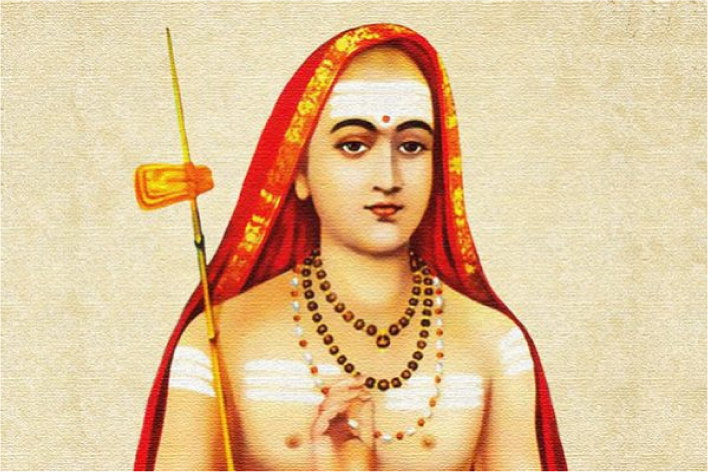


Adi Sankara was the first philosopher to consolidate the doctrine of Advaita Vedanta. His teachings are based on the Upanishadic ideal of unity of the individual Self and Brahman. Sankara is regarded as an incarnation of Lord Shiva.

Sankara toured India with the purpose of propagating the Upanishadic tenets through discourses and debates with other philosophers. He founded four mathas (monasteries) which played a key role in the historical development, revival, and spread of post-Buddhist Hinduism and Advaita Vedanta.
Sankara’s parents were Sivaguru and Aryamba. They were childless for many years. They prayed at the Vadakkumnathan temple in Trichur, Kerala, for a child. Legend has it that Lord Siva appeared to both husband and wife in their dreams, after which a son was born to them. He was named Sankara (bestower of goodness), in honour of Lord Siva (one of whose epithets is Sankara).
Sankara’s parents were Sivaguru and Aryamba. They were childless for many years. They prayed at the Vadakkumnathan temple in Trichur, Kerala, for a child. Legend has it that Lord Siva appeared to both husband and wife in their dreams, after which a son was born to them. He was named Sankara (bestower of goodness), in honour of Lord Siva (one of whose epithets is Sankara).
Once, while accepting bhiksa (food received as sacred alms from a householder), Sankara came upon a woman who had only a single dried Amalaka (gooseberry) fruit to eat which she willingly offered to Sankara as bhiksa. Moved by her nobility, Sankara composed the Kanakadhara-stotra on the spot. Legend has it that on completion of this hymn, golden amalaka fruits started showering in her home by the grace of Lakshmi, the Goddess of wealth.
From a young age, Sankara was attracted to sannyasa (monastic life). His mother was against his becoming a monk, and refused him formal permission. Story goes that once during a bath in the river, Sankara was caught by a crocodile. In the face of near death, Sankara asked to be allowed to take sannyasa (Apat-sannyasa), and mother Aryamba reluctantly agreed. Sankara immediately recited the mantras to make a renunciate of himself. Miraculously, the crocodile released him and Sankara emerged unscathed from the water.
Sankara left Kerala and travelled towards North India in search of his Guru. On the banks of the river Narmada, he met Govinda Bhagavatpada, the disciple of Gaudapadacharya. When Govinda Bhagavatpada asked Sankara for his identity, he replied with extempore verses, called Dashashloki, that succinctly brought out the entire Advaita philosophy. Govinda Bhagavatpada was impressed, took Sankara as his disciple, and taught him the Advaita Vedanta teachings enshrined in the Upanishads. Sankara was later commissioned by his Guru to write a commentary on the Brahma-sutras and propagate Advaita Vedanta.
From a young age, Sankara was attracted to sannyasa (monastic life). His mother was against his becoming a monk, and refused him formal permission. Story goes that once during a bath in the river, Sankara was caught by a crocodile. In the face of near death, Sankara asked to be allowed to take sannyasa (Apat-sannyasa), and mother Aryamba reluctantly agreed. Sankara immediately recited the mantras to make a renunciate of himself. Miraculously, the crocodile released him and Sankara emerged unscathed from the water.
Sankara left Kerala and travelled towards North India in search of his Guru. On the banks of the river Narmada, he met Govinda Bhagavatpada, the disciple of Gaudapadacharya. When Govinda Bhagavatpada asked Sankara for his identity, he replied with extempore verses, called Dashashloki, that succinctly brought out the entire Advaita philosophy. Govinda Bhagavatpada was impressed, took Sankara as his disciple, and taught him the Advaita Vedanta teachings enshrined in the Upanishads. Sankara was later commissioned by his Guru to write a commentary on the Brahma-sutras and propagate Advaita Vedanta.
On his mission to spread Advaita Vedanta, Sankara travelled to Kashi, where a young man named Sanandana from Choladesha (present day Trichy-Thanjavur in Tamil Nadu, South India) became his first disciple. In Kashi, Sankara was on his way to the Vishvanatha Temple, when he came upon a chandala (untouchable) with four dogs. When asked to move aside by Sankara’s disciples, the untouchable replied, “Do you wish that I move my everlasting Atman (the Self), or this body made of food?” Understanding that the untouchable was none other than Lord Shiva, and his dogs the four Vedas, Sankara prostrated himself before him, composing extempore, five verses known as Manisha Panchakam.
On reaching Badari in the Himalayas, he wrote the famous bhashyas (commentaries) on the prasthana-traya (Upanishads, Bhagavad Gita, and Brahmasutra) and prakarana-granthas (introductory texts on Vedanta). He later taught these commentaries to his disciples. Some, like Sanandana, were quick to grasp the essence; Sankara once summoned Sanandana from one bank of the river Ganga, while he was on the opposite bank. Sanandana crossed the river by walking on the lotuses that emerged wherever he placed his foot. Sankara blessed him with the name ‘Padmapada’ (lotus-footed one).
One of the most famous debates of Sankara was with the ritualist Mandana Mishra. Mandana Mishra’s Guru was the famous Mimamsa philosopher, Kumarila Bhatta. Sankara sought a debate with Kumarila Bhatta but he directed Sankara to meet his student Mandana Mishra and debate with him instead.
During this debate, the wife of Mandana Mishra, the learned and wise Ubhaya-bharati, was the referee. After debating for over 15 days, Mandana Mishra accepted defeat. Legend has it that Ubhaya-bharati then challenged Sankara to have a debate with her in order to ‘complete’ the victory. This debate was to be on the subject of kama-sastra (science of love). But Sankara, being a renunciate from his childhood, had no knowledge of this subject; thus, after requesting for some time before entering into this fresh debate, he entered the body of a dead king by his yogic powers and acquired the knowledge of kama-sastra. Later, however, Ubhaya-bharati declined to debate with him and allowed her husband Mandana Mishra to accept sannyasa with the monastic name ‘Sureshvaracharya’ as per the agreed rules of the debate.
Sankara traveled tirelessly to spread Advaita Vedanta. Some notable journeys include:
Sankara established four mathas to guide Hindu traditions:
We conclude this section with a well-known Sanskrit verse , recited in praise of Adi Sankara:
śrutismṛtipurāṅānām ālayaṁ karuṇālayam,
Namāmi bhagavatpāda śaṅkaraṁ loka-śaṅkaram.
“I salute Sankara Bhagavatpada, the compassionate abode of the Vedas, Smrtis, and Puranas, who bestows auspiciousness on the entire world.”